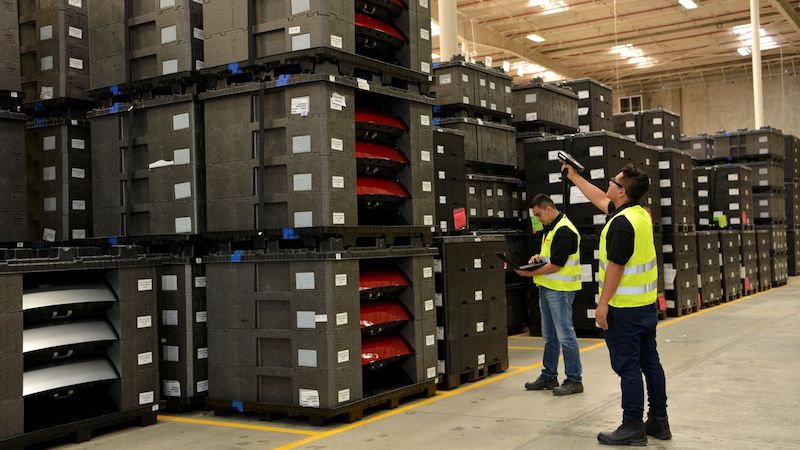Grow your business with the Discover newsletter
Logistics advice & insights straight to your inbox
Subscribe now
If you are a small business or entrepreneur in Malaysia, understanding your inventory needs and establishing an effective forecast to manage and maintain supply levels is critical to successful operations. Properly forecasting inventory helps businesses minimise risk while keeping up with customer demand. Successful inventory management will not only save time and money but also position your brand at a higher level by offering customers the products they want when they need them. Read on to learn the key steps of creating an efficient forecasting system for your small business that meets all these objectives and how to determine what works best for your organisation.
Accurate inventory forecasting is key to any successful business. It predicts the amount of inventory needed for a given time period and helps inventory managers plan for potential product demands, cut down on inventory costs, and increase revenue. In order to formulate a reliable inventory forecast, factors such as sales history, trends in demand, and average lead time between ordering and delivery should be taken into consideration. By doing this, businesses can more effectively manage their inventory while ensuring customers are getting quality products delivered in a timely manner.
Along with some of the formulas, backorder reports, end-to-end inventory tracking, and reports estimating how long current stock will last can help you calculate inventory forecasting faster and more accurately.
Lead time demand is the measure of customer demand between the time you place an order for a product to when you receive it. To calculate lead time demand, multiply average daily unit sales by lead time (in days). Use historical sales data and information on how long it has taken vendors to fulfill orders in the past to help you fill out the formula.
Lead time demand (LTD) formula = average daily unit sales x lead time
For example, 200 shirts x 10 days, so the LTD is 2000 shirts. This means that there is an estimated 2000 orders placed while you wait for your next stock to arrive.
Safety stock amount is the additional quantity of product you keep stored in your warehouse to avoid a situation where you run out of stock. To calculate safety stock, you need to know the most number of units you have sold in one day for a product and the longest lead time your vendor has taken to fulfill your order. Then, multiply your maximum daily sales by your maximum lead time. Next, take the average daily sales and multiply it by the average lead time in days. After you have done those two calculations, take the product of your first calculation and subtract that of the second. This will give you your safety stock level.
Safety stock formula = (maximum daily sales x maximum lead time) - (average daily sales x average lead time)
Using the same example of shirts, (300 shirts x 20 days) - (200 shirts x 10 days) = 4000 shirts. This means you will need 4000 shirts to ensure you have enough inventory in case something unforeseen happens.
The reorder point is the level of inventory at which a company should replenish its stock. To calculate the reorder point, multiply the average daily unit sales by the lead time, and add the safety stock. The reorder point will fluctuate based on market conditions and sales trends, so it is important to adjust it frequently.
Reorder point (ROP) formula = safety stock + (average daily unit sales x lead time)
Following the example above, 4000 + 2000 = 6000 shirts. This means you have to replenish your stock when you reach this figure to avoid running out of shirts too quickly.
It is important to order the right amount of inventory at the right time. This will help you save money and make customers happy. You can identify the reorder quantity by multiplying the average unit daily sales by the average lead time to figure out how much inventory you need.
Drop shipping is a popular retail business model in which vendors do not need to hold inventory or handle product shipment; instead, they purchase the products from another third party once a customer orders and it is delivered directly to the customer. This approach benefits businesses in many ways, such as cutting down their shipping costs. Drop shipping in Malaysia allows businesses to focus solely on the marketing and management of their e-commerce stores, alleviating any associated overhead cost that would be incurred if handling inventory and managing shipments of stock. This opens up businesses to tackle more important aspects of their operations, thus allowing them to achieve greater success with drop shipping.
The first step in forecasting is critically assessing available data and inventory. This process will vary largely depending on the organisation's longevity, as established companies should utilise historic data for inventory analysis and employ a quantitative approach. For newer companies, it is best to begin by gathering qualitative market information. To achieve accuracy in forecasting, a combination of approaches and data types should be used. While quantitative data gives modelers a base, qualitative inputs render certain models more comprehensive. Ultimately, forecasting should be tailored to any industry-specific implications, but remain alert to unexpected market fluctuations that could suddenly alter demand.

Inventory forecasting can be a difficult task, but it is crucial to ensuring that you have the products your customers want in stock. By following the tips in this guide, you should be able to develop an inventory management system that works for your business, navigate rising costs and avoid costly mistakes. Small businesses in Malaysia need to stay agile to compete with larger businesses, and this includes having accurate inventory forecasts. Use our guide to take control of your inventory, keep your business moving forward and take your business global.